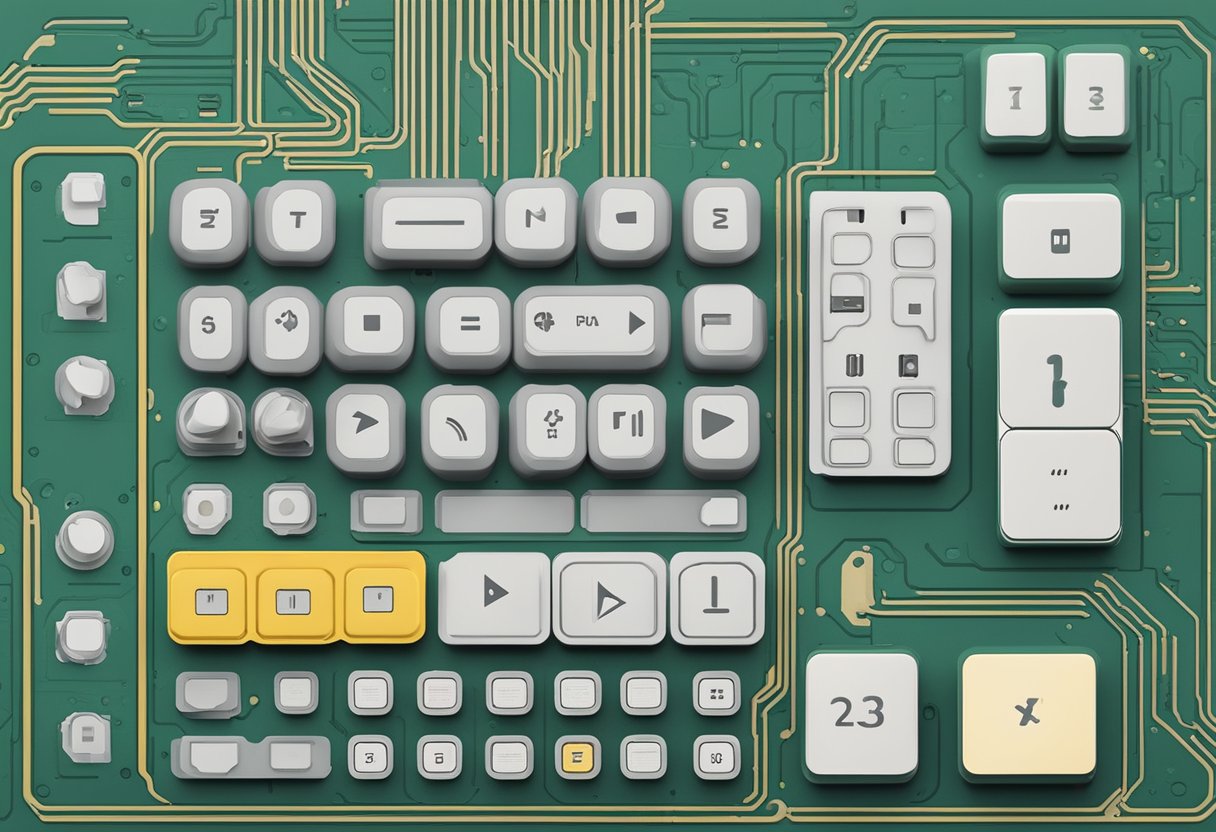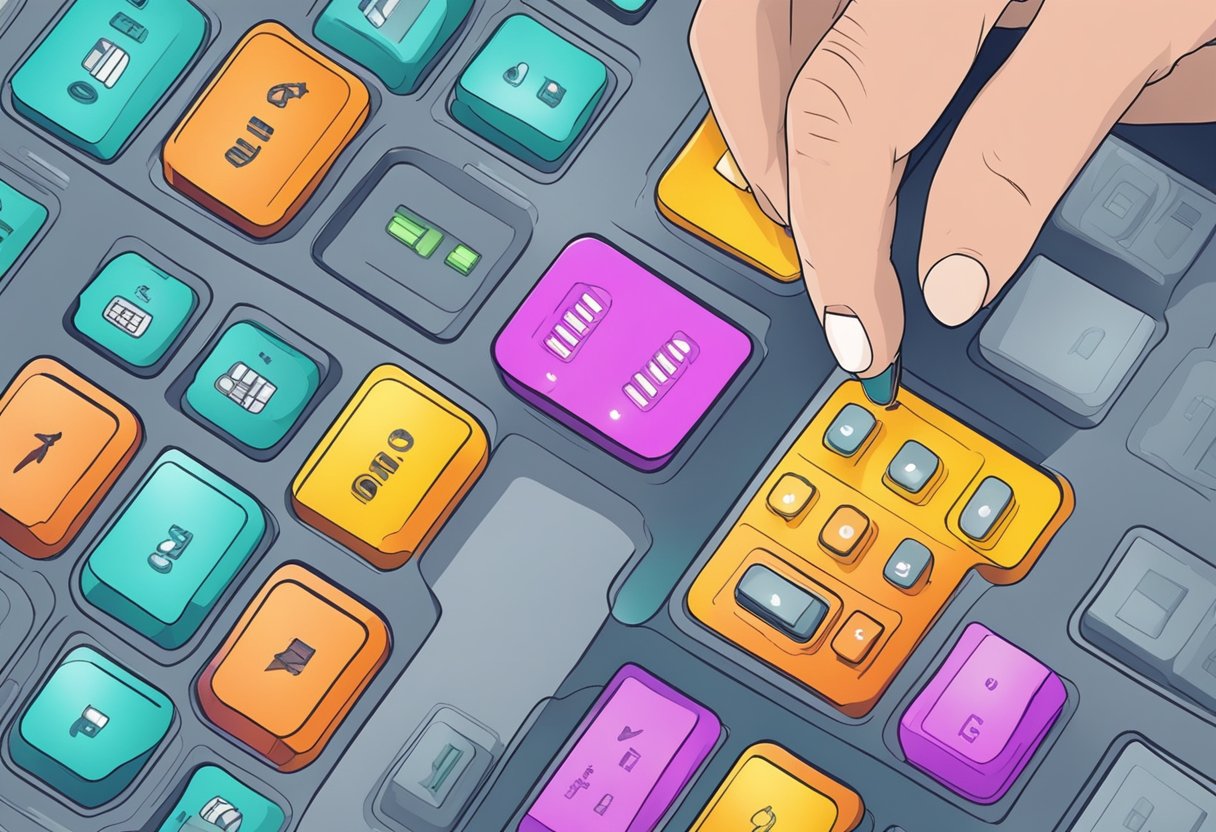Contact
Write to Us And We Would Be Happy to Advise You.
Do you have any questions, or would you like to speak directly with a representative?
By peter
If you are in the market for a durable and reliable switch, a rubber keypad membrane switch might be the solution for you. This type of switch is commonly used in a variety of electronic devices, including remote controls, medical equipment, and industrial machinery.

A rubber keypad membrane switch is made up of several layers, including a top layer of silicone rubber, a bottom layer of circuitry, and a spacer layer in between. The silicone rubber layer contains the buttons or keys that are pressed by the user, while the circuitry layer contains the conductive traces that register the key presses. The spacer layer helps to create a tactile response when a button is pressed, giving the user feedback that the key has been registered.
One of the benefits of a rubber keypad membrane switch is its durability. The silicone rubber layer is resistant to wear and tear, and can withstand exposure to a variety of environmental factors, including extreme temperatures, moisture, and chemicals. Additionally, the switch is easy to clean and maintain, making it a popular choice for use in medical and industrial settings.

Rubber keypad membrane switches are a type of interface that allows users to communicate with equipment, machinery, or instrumentation. They are used in a variety of applications, including medical devices, industrial controls, and consumer electronics.
The basic construction of a rubber keypad membrane switch consists of several layers of materials, including a top layer of silicone rubber, a bottom layer of polyester film, and a middle layer of conductive ink. The conductive ink is used to create the circuitry that allows the switch to function.
One of the advantages of rubber keypad membrane switches is their durability. They are resistant to moisture, dust, and other environmental factors, making them ideal for use in harsh environments. They are also easy to clean and maintain, which is important in applications where cleanliness is a priority.
Rubber keypad membrane switches can be customized to meet the specific needs of a particular application. They can be designed with a variety of shapes, sizes, and features, including backlighting, tactile feedback, and graphic overlays. This makes them a versatile and flexible solution for a wide range of applications.
In summary, rubber keypad membrane switches are a durable and customizable interface solution that can be used in a variety of applications. They are easy to clean and maintain, and can be designed to meet the specific needs of a particular application.

When it comes to designing and customizing rubber keypad membrane switches, there are several factors to consider. This section will explore some of the most important aspects of designing and customizing rubber keypad membrane switches, including material selection, tactile feedback options, and aesthetic customization.
Choosing the right materials for your rubber keypad membrane switch is critical to ensuring its durability and functionality. Some of the most common materials used in the construction of rubber keypad membrane switches include silicone rubber, polyester, and polycarbonate.
Silicone rubber is a popular choice due to its flexibility and resistance to extreme temperatures and chemicals. Polyester is another common material used in membrane switches due to its durability and resistance to abrasion. Polycarbonate is also a popular choice due to its high impact resistance and optical clarity.
Tactile feedback is an important consideration when designing a rubber keypad membrane switch. Tactile feedback refers to the physical sensation that the user feels when pressing a button or key. There are several different types of tactile feedback options available, including metal dome switches, polydome switches, and non-tactile switches.
Metal dome switches are the most popular tactile feedback option due to their durability and tactile response. Polydome switches offer a softer tactile response and are often used in applications where a quieter switch is desired. Non-tactile switches do not offer any physical feedback, but they are often used in applications where a low profile and low cost are important factors.
Customizing the look and feel of your rubber keypad membrane switch is an important consideration. There are several different options available for customizing the appearance of your switch, including graphic overlays, backlighting, and embossing.
Graphic overlays are a popular choice for adding color and branding to your membrane switch. Backlighting is another popular option that can be used to enhance the visibility of the switch in low light conditions. Embossing can be used to create a raised or recessed design on the surface of the switch, adding texture and visual interest.
When it comes to manufacturing rubber keypad membrane switches, there are several key processes involved. In this section, we will take a closer look at each of these processes and what they entail.
The first step in the manufacturing process of a rubber keypad membrane switch is printing and cutting. This process involves printing the top layer of the keypad with conductive ink to create circuit patterns. The top layer is then cut to the desired shape and size using a laser or die-cutting process. This step is crucial in ensuring that the keypad is accurate and precise.
Once the top layer is printed and cut, the next step is layer assembly. This process involves laminating together layers of the keypad using adhesive. Depending on the design of the keypad, there may be several layers involved, including a graphic overlay, spacer layer, and bottom circuit layer. The layers are carefully aligned and bonded together to create a seamless, functional keypad.
After the layer assembly process is complete, the keypad undergoes electrical testing. This step involves checking the conductivity of the keypad to ensure that it is functioning properly. Each circuit is tested using a multimeter to verify that it is properly connected and that there are no shorts or open circuits. This step is crucial in ensuring that the keypad is fully functional and meets the required specifications.
In conclusion, the manufacturing process of rubber keypad membrane switches involves several key processes, including printing and cutting, layer assembly, and electrical testing. Each of these steps is crucial in ensuring that the keypad is accurate, precise, and fully functional.
Rubber keypad membrane switches are widely used in various industries due to their durability, flexibility, and customizability. Here are some common applications and uses of rubber keypad membrane switches:
Rubber keypad membrane switches are extensively used in consumer electronics such as remote controls, calculators, and gaming devices. These switches provide a tactile feedback that enhances the user experience. They are also easy to clean and maintain, making them ideal for devices that are frequently used.
Rubber keypad membrane switches are widely used in industrial controls such as machinery and equipment. They are highly resistant to dust, moisture, and chemicals, making them suitable for use in harsh environments. They are also customizable, allowing for the creation of switches with specific functions and designs.
Rubber keypad membrane switches are commonly used in medical devices such as diagnostic equipment and patient monitoring systems. They are easy to clean and sanitize, making them ideal for use in sterile environments. They are also customizable, allowing for the creation of switches with specific functions and designs that meet the requirements of medical professionals.
Overall, rubber keypad membrane switches are versatile and reliable, making them an excellent choice for various applications and industries.
When it comes to integrating and installing a rubber keypad membrane switch, there are a few important factors to consider. In this section, we will cover the mounting techniques, electrical connections, and user interface considerations that you need to keep in mind.
The first step in integrating a rubber keypad membrane switch is to determine how it will be mounted. There are several different mounting techniques to choose from, including adhesive mounting, screw mounting, and snap-in mounting. Adhesive mounting is a popular option, as it is easy to apply and provides a secure hold. Screw mounting is another common technique, which is ideal for applications that require a more permanent installation. Snap-in mounting, on the other hand, is a good choice for applications that require easy removal and replacement of the switch.
Once you have determined the mounting technique, the next step is to make the electrical connections. Rubber keypad membrane switches typically have a flexible circuit that connects the switch to the device or system it is controlling. There are several different electrical connections to choose from, including ZIF (zero insertion force) connectors, soldering, and crimping. ZIF connectors are a good choice for applications that require easy removal and replacement of the switch, while soldering and crimping provide a more permanent connection.
Finally, it is important to consider the user interface when integrating and installing a rubber keypad membrane switch. The user interface includes factors such as the size and shape of the switch, the tactile feedback provided by the switch, and the graphics and labeling on the switch. It is important to choose a switch that is easy to use and provides clear feedback to the user. Additionally, the graphics and labeling on the switch should be clear and easy to read, even in low-light conditions.
In summary, integrating and installing a rubber keypad membrane switch requires careful consideration of the mounting technique, electrical connections, and user interface. By taking these factors into account, you can ensure that your switch is easy to use, provides clear feedback to the user, and is securely mounted to your device or system.
Rubber keypad membrane switches are a reliable and durable input solution for electronic devices. However, like any other component, they require proper maintenance to ensure their longevity and optimal performance.
Dirt, dust, and other debris can accumulate between the keys of the rubber keypad membrane switch, leading to malfunctioning keys. Therefore, it is essential to clean the keypad regularly. To clean the keypad, you can use a soft bristle brush or a microfiber cloth. Avoid using harsh chemicals or abrasive materials that can damage the keypad’s surface.
Rubber keypad membrane switches can withstand millions of keypresses, but over time, the keys can become worn or damaged. To prevent wear and tear on the keypad, it is recommended to use a light touch when pressing the keys. Additionally, avoid exposing the keypad to extreme temperatures, humidity, or direct sunlight, which can cause the keypad’s surface to warp or crack.
If your rubber keypad membrane switch is damaged beyond repair, you will need to replace it. Replacement keypads are available from many manufacturers and suppliers. When replacing the keypad, it is essential to ensure that the new keypad is compatible with your device’s specifications.
If your rubber keypad membrane switch is malfunctioning or not responding correctly, you may be able to repair it. However, repairing a keypad requires specialized knowledge and skills. Therefore, it is recommended to seek professional help from a qualified technician or service provider.
In conclusion, proper maintenance and care are essential to ensure the longevity and optimal performance of rubber keypad membrane switches. By following the cleaning procedures, managing wear and tear, and seeking professional help when necessary, you can extend the lifespan of your keypad and avoid costly replacements.
Do you have any questions, or would you like to speak directly with a representative?